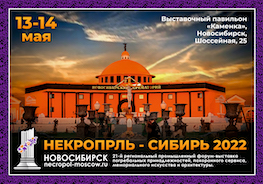“These people mire you in your sense of loss just as you are ready to discover what remains to be found,” writes one of our advice columnists.

Ivan Kramskoi’s “Inconsolable Grief” (1884) is in the collection of the State Tretyakov Gallery in Moscow. HIP/Art Resource
By Megan O’Grady
Q: My husband died recently. It was as good a death as could have been expected: He had been ill for a year, so we had time to prepare and to mourn together, he died at home under palliative care and in very little pain (he said), and our family, close friends and I had time for goodbyes. We had a good life together, and cleared up any prospective messes in advance of his departure. We wrote his obituary together.
My question is this: People who knew neither of us very well fall upon me in public places with hugs and kisses and sad faces. I am not a huggy sort of person, and I know they’re trying to be sympathetic, but the intrusions and the intimations that I must be very sad and lonely drive me to distraction. I loved my husband, but we each grieve in our own way, and mine is to get my life in order, circle around close friends and move on to the next adventure, project or quiet time. How do I best deal with these intrusions without hurting acquaintances’ feelings? — Signed, Getting On With It
A: All of us, but maybe especially women, have experienced what it’s like to feel like a screen for someone else’s projections. The over-the-top reactions of your acquaintances, perhaps well intentioned, only serve to communicate to you that you have just suffered their worst nightmare. I can understand your impatience with them as you open yourself to the world again and consider your life, fundamentally reordered. These people mire you in your sense of loss just as you are ready to discover what remains to be found.
Such exchanges trouble you because they’re about much more than navigating social awkwardness. The fact is, when we suffer loss, we often look to those around us to help affirm who we are, to give us a sense of continuity and possibility. We need to have those conversations in order to imagine a way forward, so that we don’t feel like we’re stepping off a cliff, legs wheeling in thin air. How wonderful that you were able to prepare for this, to the extent that one can, with your husband. You were able to have a sense of an ending, something that often, even under normal circumstances, just isn’t possible. These days, with families barred from hospitals and memorial services severely limited, it’s all the more rare and wonderful.
But, as you know, part of the complexity of grief is that it’s not only about missing the person who knew you in a way that no one else quite does; it’s also about grieving the loss of yourself in that shared context. You aren’t the same person you were during your marriage or before you got married. The next few years will be filled with trial and error, and having friends — old and new — who actively listen as you test out new plans and ideas is essential. “Starting a new chapter” is an appealing euphemism for a time like this because it implies a continuity, a grander scheme, an awareness that life is what we live along the way, and for that reason, it can never truly be “lost.”

Advertising for the 2007 show “Schmerz/Pain” at the Hamburger Bahnhof in Berlin. Credit...Painart
Once, in my 30s, faced with losses, I embarked on a new chapter in a very mechanical way: I got on a plane to Berlin, a city well suited for reinvention and its accompanying grief. I found there the kind of new friends who would sit with me for dozens of hours over the course of a year in cafes, drinking wine and helping me through the messy process of eking out a new version of myself. I lived in a series of sublet apartments, all of them with views of a cemetery. I dated an earnest German who believed the internet would save democracy. How many wrong turns, I often thought, grandiose with solipsism, had I made for it to come to this.
In that time of odd suspension, I was spending a lot of time wandering around museums, places that relieved me of my solipsism. At the Hamburger Bahnhof, the popular former train station turned contemporary art venue, the word “Schmerz” greeted me in enormous letters, the English translation in smaller font below: “Pain.” I wandered numbly through the meticulously curated exhibit, with its Anselm Kiefer erosions in browns and grays, the contorted pale bodies of a Francis Bacon, objets like Nietzsche’s death mask and a biting stick once used in operations without anesthesia. “Art is not just there to be understood,” Joseph Beuys once said; it is there to be experienced. I didn’t find the exhibit painful, though, just pedantic and depressing.

I found what I needed instead while visiting the Gemäldegalerie, home to the (rather less fashionable) old masters: a Bruegel teeming with life here, a weary-faced Mantegna Madonna there; Vermeer’s women aglow at their open windows, Holbein’s officious burghers. The museum was almost always empty, the silence inside had a velveteen density, and there were little alcoves at the end of certain galleries where one could sit and reflect. I thought I could really sense something of the people in these portraits, who became familiar to me — the tender mothers and infants, the satin-sleeved merchants, the young women who themselves seemed to be seeking a new view. The emotion of the subjects was to me indistinguishable from that of their creators, each painting representative of a moment in time and the effort of making it. I felt myself poised there, on this tension between their time and mine, absorbing the feeling of the artists, centuries after their deaths, the canvases places to explore and amplify aspects of themselves that perhaps went otherwise unexpressed. I returned many times, sometimes several times a week, to be reminded that while they were now dead I was still very much alive, that life was fragile and finite and not to be squandered.

-

Andrea Mantegna’s “Maria With the Sleeping Child” (date unknown).Credit...© Staatliche Museen zu Berlin, Gemäldegalerie. Photo: Jörg P. Anders

The fact is, nothing really prepares us for loss; we outgrow our lives faster than we can quite catch up. “The art of losing isn’t hard to master,” Elizabeth Bishop wrote, with pained irony, in her 1976 villanelle “One Art,” in which she recounts a continuum of losses, from house keys to those things immeasurable and unrecoverable. We will all, someday, lose everything we love. But this impermanence is also what makes us understand that the time we have is something to be cherished. No one — not new friends or old, and certainly not I — can tell you precisely what the next steps will be or just what experiences of art and friendship might open a window in your mind. But I can tell you that openness to life’s possibilities is a stance, a perspective on the world that we should all try to cultivate, wherever we are in it. All of us, in ways small and vast, have been knocked off balance, and are questioning the certainty of certain futures. We’re all engaged in a process of self-reckoning, reconsidering our lives and priorities.


While there are many beautiful memoirs capturing the textures of grief — Elizabeth Alexander’s, Joan Didion’s, Yiyun Li’s, Sarah Manguso’s — I often think there isn’t enough written about what comes after: the in-between times in life, before things are sorted, when we’re still at an impasse with ourselves. And here I’m thinking of Rachel Cohen’s “Austen Years” (2020), a memoir written in a period of dramatic change, including the death of her father and birth of her children, time she navigated with the companionship of an author seeking answers in her own tumultuous era; and Helen Macdonald’s “H Is for Hawk” (2014), in which the author mourns her father while training a goshawk, a hunting bird, a process that involves great patience, a freezer-full of dead mice and a certain wildness of vision. Both these books are forthright about the effort and risk, but also the thrill and pleasure, of working out those next chapters. I’m not suggesting you run out and acquire a flesh-eating pet (though that’s one way to keep those spaniel-eyed “friends” at arm’s length), but that something of your own searching thoughts may stand more fully illuminated in the light of another’s.
Another idea: to go a step further, via books that reexamine our common present context in light of everything that has come before. Sarah Broom’s memoir, “The Yellow House” (2019), does exactly that, connecting her family history, and the story of her childhood home in New Orleans, to our American story, with its entrenched racial inequality. Saidiya Hartman’s “Wayward Lives, Beautiful Experiments” (2019) also traces the echoes between private losses and public life in a social history that explores the lives of young Black American women in the early 20th century, unhailed Modernists who were defining for themselves what life could be. These were women who understood the imaginative work of self-authorship better than any of us.

Any real grieving process will always involve looking back to move forward. I want you to honor this in-between time, but also to find good company for it, literary or otherwise, of the kind that inspires you to take up more space in the world, not less. Whether you are in lockdown in your home or protesting in the streets, you can lay the groundwork now as concretely as possible. You can make new friends by getting involved in any number of initiatives, local or national. Your emotional and energetic capital will be valuable in ways that you probably can’t yet know. Fear and freedom, like love and loss, will always be two sides of the same coin, and there’s no time to waste.
The Master and Margarita's enduring literary legacy inside Russia and beyond
https://www.abc.net.au/news/2020-08-01/master-and-margarita-mikhail-bulgakov-legacy-russia-and-beyon...










